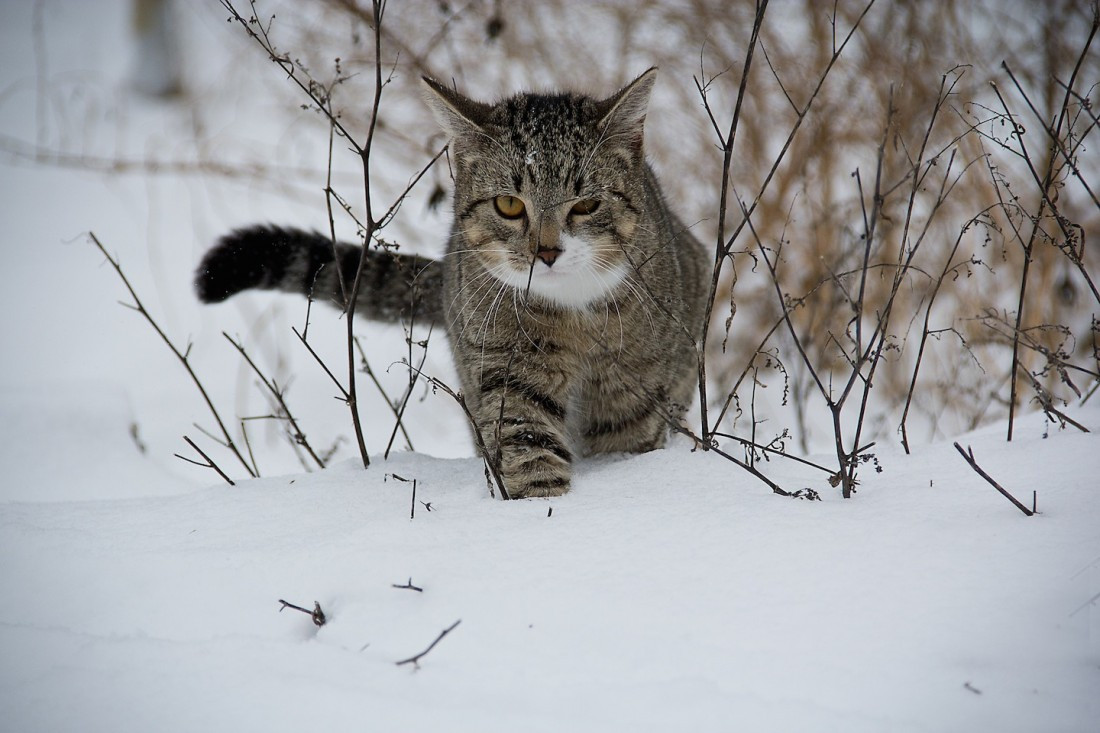Cats in crisis
Charity and city clash over population control
As Craig Street Cats gears up for its spring spay and neuter drive, the organization believes that more must be done to control Winnipeg’s feral feline population.
On March 5, Craig Street Cats will hold its annual Spay-Ghetti Dinner to raise funds for its upcoming season of Trap-Neuter-Return (TNR), when street cats are humanely trapped, sterilized, and returned to their colonies.
Lynne Scott, the organization’s founder and executive director, estimates that Winnipeg has at least 100,000 community cats. Of these, 75 to 80 per cent are feral – not socialized for human contact.
“Those are the cats you never see,” she says. “You’ll see a flash of movement out of the corner of your eye. Typically you don’t even know the cats are there until you find kittens.”
After two or three generations, there may be 20 or 30 animals. Life near unfixed felines is not fun.
“It’s smelly. It’s loud. You might find sick or dead cats with abscesses from fighting. Unaltered males spray on garbage cans and doors, and whatnot. And unaltered male cat urine is very pungent.”
Currently, the City of Winnipeg provides funding for individual spaying/neutering of feral cats, in a program that the Winnipeg Humane Society refers to as Trap, Neuter, Release.
However, CSC practices Trap-Neuter-Return, bringing the felines back where they were found. In fact, volunteers keep tabs on cats, through a comprehensive colony management approach. They keep records of population numbers, feed the animals on a schedule, remove any new cats to be spayed and neutered, and rescue kittens and strays for adoption.
“When you do that, you can expect a dramatic drop in numbers in the first two years,” Scott says. “And then typically after five years, population is down by about 70 per cent.”
“We’re at nine years now for the index colony on Craig Street, and it’s down 90 per cent.”
These colonies are also calmer places.
“When you do comprehensive Trap-Neuter-Return, the nuisance behaviours stop almost overnight. The spraying, the yowling, the fighting.”
However, CSC only manages 500 cats. That’s because colony management is illegal under the City of Winnipeg’s Responsible Pet Ownership By-law, which considers it ‘harbouring’ animals.
Kailey Barron, a communications projects officer with the City of Winnipeg, confirmed that its current strategy is limited to funding TNR for individual cats.
“This programming helps prevent the birth of unwanted cats, which could lead to increased feral populations. The City of Winnipeg has no direct programs aimed at management of existing feral cat colonies.”
Scott believes the city’s reluctance to change the by-law is short-sighted.
“There’s no way that just doing a cat here and a cat there will ever be helpful to the overall picture.”
She says that more people would manage colonies if they weren’t afraid of neighbours calling Animal Services.
“Basically, if the city just removes harbouring from the by-law and gets out of the way, then there are citizens prepared to do this work without costing the city anything.”
Published in Volume 70, Number 22 of The Uniter (March 3, 2016)

